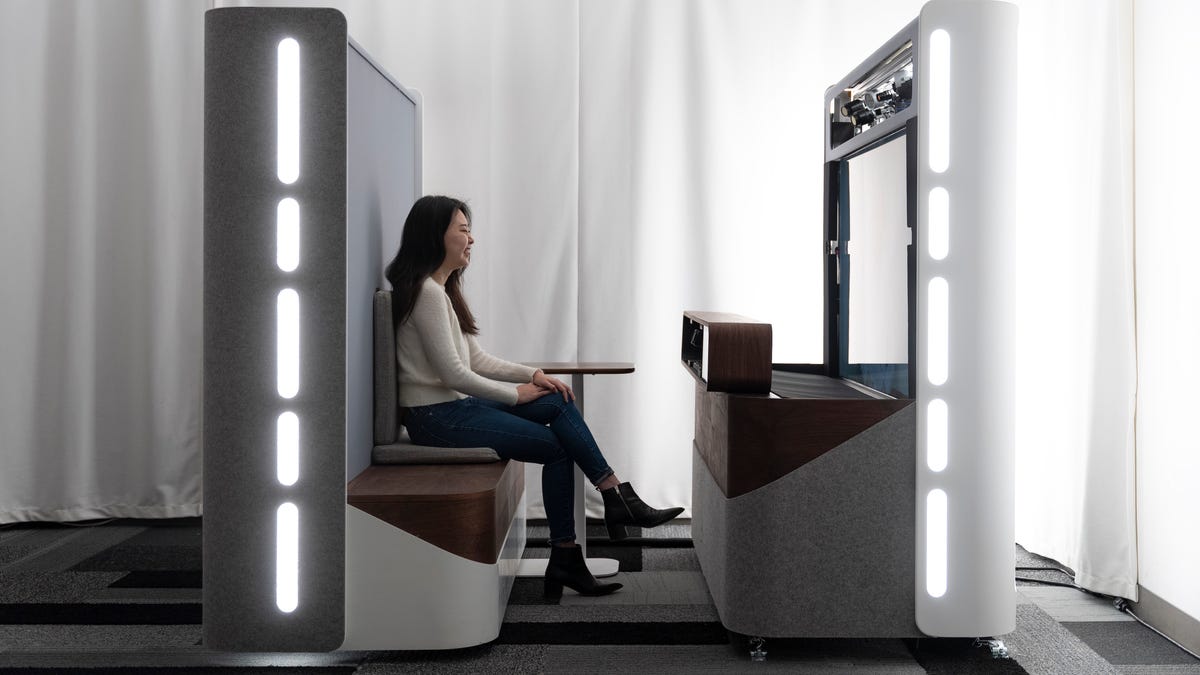Google Starts Testing Holographic Video Chats at Real Offices
Project Starline, a light field display 3D communication platform, is being installed in some corporate locations for the first time.

Google's Project Starline, a holographic chat booth being installed in some early-access test offices this year.
Project Starline, Google's experimental technology using holographic light field displays to video chat with distant co-workers, is moving out of Google's offices and into some real corporate locations for testing starting this year.
Google's Project Starline tech, announced last year at the company's I/O developer conference, uses giant light field displays and an array of cameras to record and display 3D video between two people at two different remote locations.
Starline prototypes are being installed at Salesforce, WeWork, T-Mobile and Hackensack Meridian Health offices as part of the early-access program, with each company that's part of the program getting two units to test for start.
Google's Project Starline makes it seem like you're talking to someone in real life through a window, instead of through video chat.
According to Google, 100 businesses have already demoed Project Starline at the company's own offices. The off-Google installations are a next step to test how the holographic video chats could be used to create more realistic virtual meetings, without needing to use VR or AR headsets.
This tech won't be anything that regular customers will be seeing: it's being installed for corporate use only and only in a few test sites for now. But, it's technology that Google believes could help remote communications with customers, creating a more immediate sense of presence than standard video chats.

